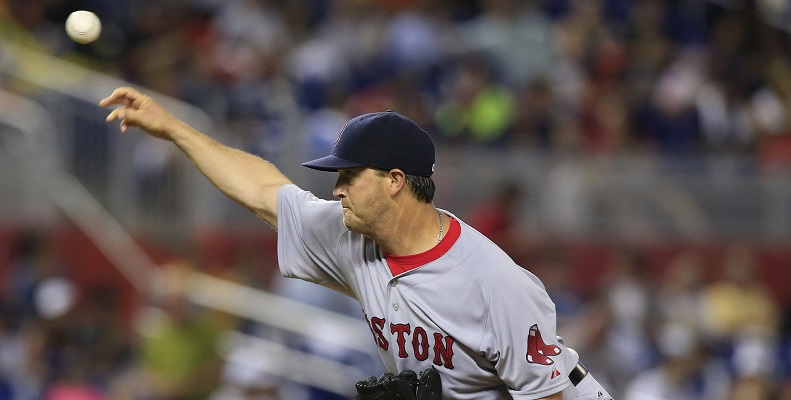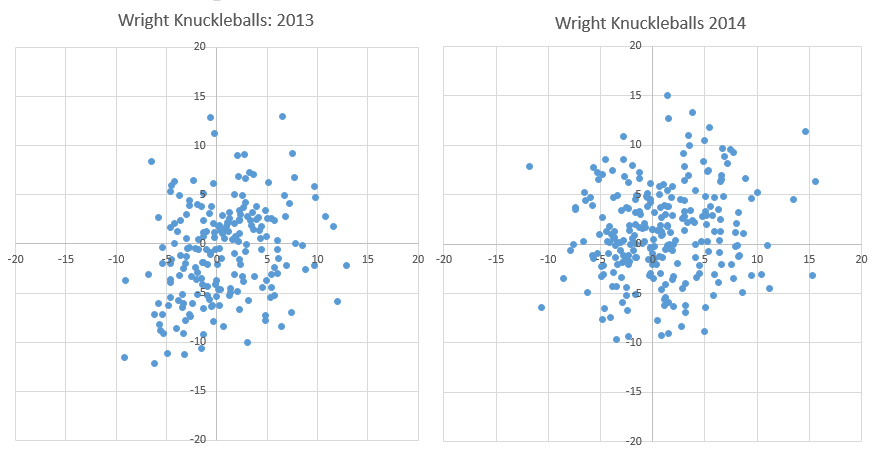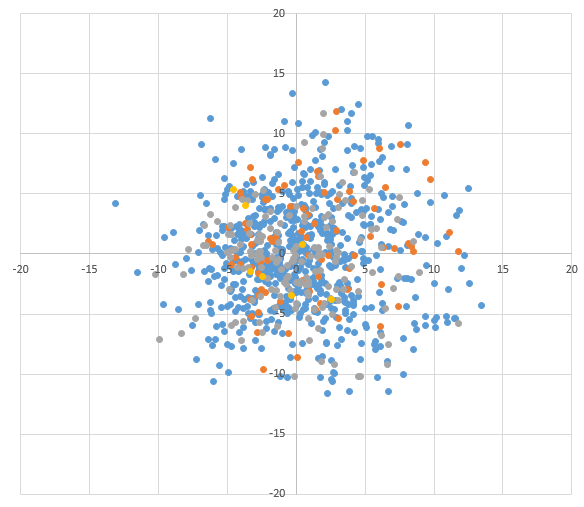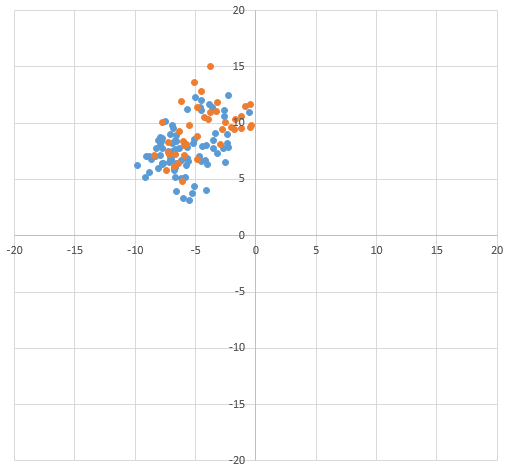Steven Wright’s knuckleball isn’t Tim Wakefield’s. Wright’s doesn’t float up there in the mid-60s like Wakefield’s, but more like R.A. Dickey in the mid-70s — but he also doesn’t have the same experience, just picking up the pitch in 2011 (Wakefield’s last season). What he does have is better results. Wright currently sports a 3.95 career ERA in the majors — a mark last achieved by Wakefield in 2002, when he had a 2.81 ERA while pitching half the year in relief.
Even the 4.09 ERA that Wright has this season looks pretty good compared to Wakefield, who came under that ERA in just four of his twenty seasons and tied it one other one (to be fair to Wakefield, it was a different era). Before being put on the 7-day concussion DL after getting hit in the back of the neck with a fly ball, Wright was doing much better in his new stint in the rotation, especially in his last three starts (5 ER in 20 IP, 2.25 ERA). After breaking down Wright’s knuckleball earlier this season, we said we’d be on the lookout for changes.
With PITCHf/x, we measure where the ball ends up over the plate as compared to where it would be if it had no spin; that’s a method that may be a little less than satisfying for a knuckleball, which can change direction as it meanders to the plate. Theoretically, at least, a pitch could move and then “double back,” reading as having little movement. In 2013 and 2014, Wright’s knuckleballs were pretty well distributed all over the “movement” map, compared to how it may have moved were it perfectly round, with no spin (at 0,0 in the plot):
Keeping the totals similar, here are 239 knuckleballs he threw in his most recent three starts:
The distribution seems similar, and except with the possible exception of those pitches we can’t pick up that might “double back,” the idea is to have some movement; differences in inches are huge, but it’s probably true that the more different any particular pitch is from the pack generally, the better the results.
Here are Wright’s knuckleballs this season (888, as retrieved from Baseball Savant). It’s hard to detect a rhyme or reason to how Wright finds the most success. It does seem like the more distance from 0,0, the better Wright’s results — the orange “in play” and red “home runs” definitely seem to be more in the middle — but the differences are not very significant.
The biggest difference for Wright since we checked in early this season may not be with his knuckler at all — but with his fastball, itself slower than quite a few major league changeups. There, unlike with the knuckleballs, the answer may be less movement, not more.
While Wright’s knuckleball is released at 74-75 mph pretty consistently, per Brooks, that’s made his 86-ish mph four-seam fastball a kind of reverse changeup, with some success coming when he’s deployed it sparingly thanks to about an ~11 mph difference in release speed. But Wright also throws a sinker, also per Brooks, and as that pitch is released more like 83-84 mph, there isn’t quite as much separating it from his knuckleballs.
As a reliever, Wright threw knuckleballs almost exclusively, but in his recent five-start stint, he’s back down to his previous range.
In previous seasons, Wright had thrown the sinker 6.6% (2013) and 9.0% (2014) of the time, about as often as his four-seam, 7.0% (2013) and 6.1% (2014). One consequence of Wright throwing his knuckleball more often than in the past (89.7% this season, up from 84.0% and 84.7%) is that he’s thrown fewer fastballs — and yet, early this season, it was the four-seam that he seemed to favor, even in his four starts.
As a reliever, Wright threw knuckleballs almost exclusively, but in his recent five-start stint, he’s back down to his previous range. Some of it is deception, but some of it is the longer at bats he’s tended to get as a starter. Still, look how his pitches have broken down per Brooks and Pitch Info in his five recent starts:
| Game | Four-seam | Sinker | Knuckleball |
| 7/20/15 | 2 | 14 | 82 |
| 7/25/15 | 1 | 8 | 65 |
| 7/30/15 | 3 | 18 | 95 |
| 8/5/15 | 2 | 10 | 96 |
| 8/11/15 | 4 | 19 | 83 |
This does look like a conscious effort to move toward the sinker. That makes intuitive sense; so long as Wright can control the sinker just as easily as the four-seam, he can use it for needed strikes just the same. Opponents have hit .188 off the sinker, in contrast to .333 off the four-seam, and while the samples are too tiny to do anything with, that’s at least some evidence that the shift isn’t hurting him. The MLBAM algorithm didn’t classify the two pitches separately, but here’s how they sort out on a plot formatted like the ones above (blue from the last five starts, red from earlier in the year):
It may be that in shifting toward the sinker, Wright is obscuring the difference between his fastballs and his knuckleballs. It doesn’t seem all that likely — I’m sure spin is sometimes very difficult for a batter to pick up, but the difference between “almost no spin” and “some spin” would seem to be pretty apparent. Maybe the sinker looks a little bit more like an unsuccessful knuckleball, one with unintentional spin. Either way, it’s working out all right so far.
Photo by Robert Mayer/USA Today Sports Images




